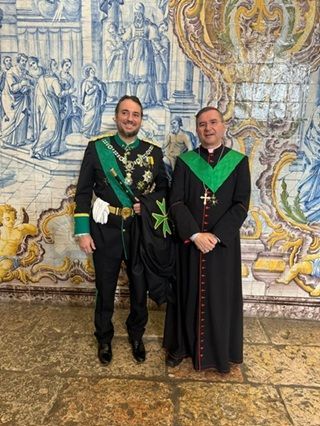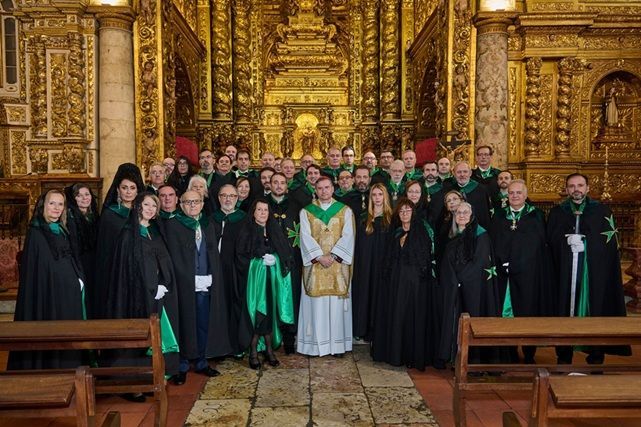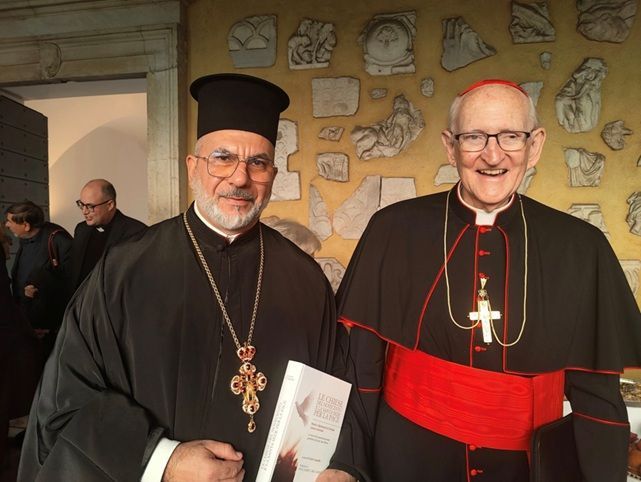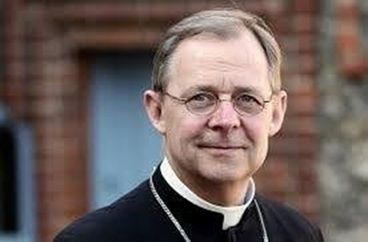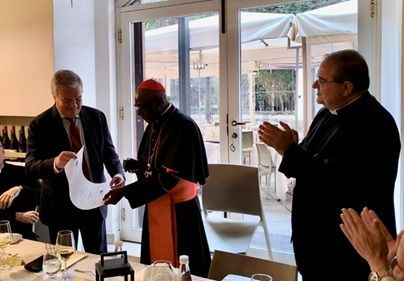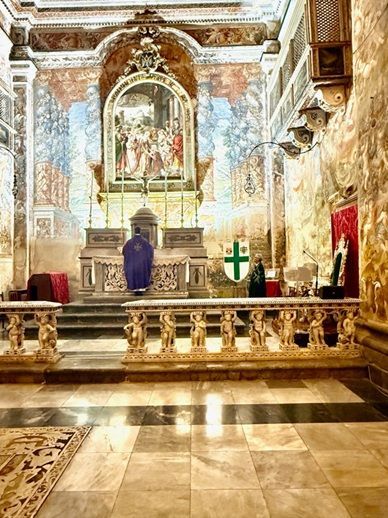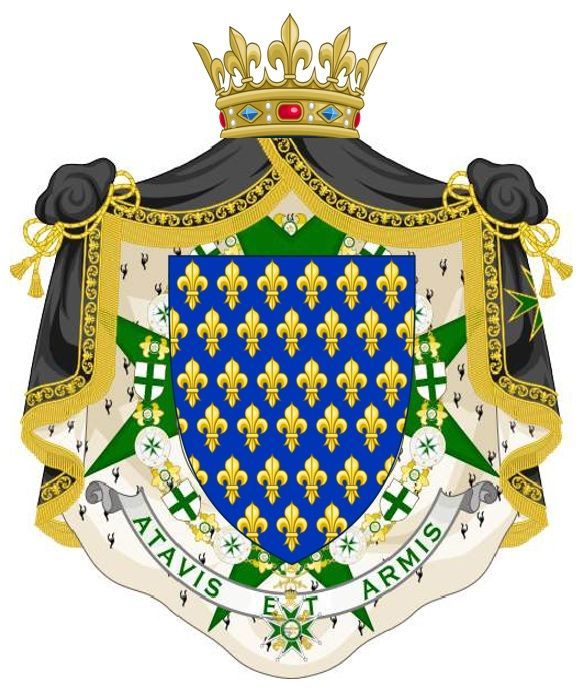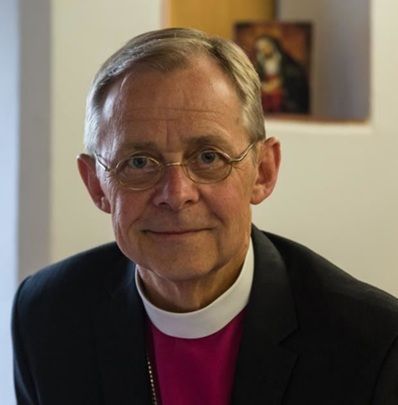MEDITAZIONE PER IL VENERDI’ SANTO 2025 DEL MOLTO REV.DO DOM VITTORIO RIZZONE, OSB, ECLJ, ABATE DI SAN MARTINO DELLE SCALE
MEDITAZIONE PER IL VENERDI’ SANTO 2025 DEL MOLTO REV.DO DOM VITTORIO RIZZONE, OSB, ECLJ, ABATE DI SAN MARTINO DELLE SCALE

(Crocifisso della Chiesa di S. Spirito, di ignoto, fine ‘300 inizi ‘400, Palermo)
Carissimi Confratelli e Consorelle dell’Ordine di San Lazzaro di Gerusalemme.
Forse ancora più della Pasqua, l’azione liturgica del Venerdì Santo con la commemorazione della passione del Signore, peraltro già al centro della liturgia della Parola della domenica precedente, cosiddetta “delle palme”, suscita coinvolgimento e commozione da parte dei fedeli.
È il coinvolgimento nella Passione di Cristo delle proprie sofferenze e dei propri dolori, delle fatiche e delle delusioni di ogni giorno, dell’esperienza della morte che tocca in qualche misura tutti, a far sentire prossima l’esperienza della croce di Cristo, mentre la sua risurrezione rimane un fatto ancora da esperire nella propria carne.
Nel corso del suo terzo viaggio missionario Paolo annunzia ad Atene, nel contesto di un discorso ben preparato, in considerazione anche del confronto con i sapienti del luogo, la risurrezione dai morti di Gesù, ma solo in pochi divennero credenti, suscitando, anzi, la derisione dei più (At 17,18.31-32).
L’insuccesso della sua predicazione ad Atene fa sì che l’Apostolo nella tappa successiva, Corinto, corregga il tiro, cambiando stile e contenuto dell’annunzio. Successivamente, scriverà, ripercorrendo l’esperienza nella città dell’Istmo: “quando sono venuto tra voi, non mi sono presentato ad annunziarvi la testimonianza di Dio con sublimità di parola o di sapienza. Io ritenni infatti di non sapere altro in mezzo a voi se non Gesù Cristo, e questi crocifisso. Io venni in mezzo a voi in debolezza e con molto timore e trepidazione; e la mia parola e il mio messaggio non si basarono su discorsi persuasivi di sapienza, ma sulla manifestazione dello Spirito e della sua potenza…” (1Cor 2,1-4). A differenza di Atene dove Paolo parla innanzitutto di resurrezione dai morti, a Corinto, l’annunzio della “parola della croce” (1Cor 1,18) apre la porta della fede a un popolo numeroso (At 18,10). Non che ai Corinzi non annunzi la risurrezione (1Cor 15), ma questa viene subordinata al fatto che è innanzitutto il Crocifisso, che è risorto (cfr. Mc 16,6).
La risurrezione, infatti, se avulsa dalla passione e dalla morte di croce, rimane nel campo del miracoloso, e pertanto nella indisponibilità dell’uomo, mantenendo, peraltro, inalterata la distanza abissale tra il Creatore, l’Onnipotente, con i suoi prodigi e la creatura, con la sua impotenza, segnata dalla morte.
Dio, invece, che è sempre stato il “Santo in mezzo” al suo popolo (cfr Os 11,9), si coinvolge nella vicenda dell’uomo e si impegna totalmente nel suo Figlio Gesù – quest’anno, in contesto giubilare, si celebrano i 1700 anni dalla proclamazione a Nicea del dogma della suo essere Dio -, ebbene non un dio subordinato o una creatura, ma Lui stesso Dio. Egli non si avvale delle sue prerogative divine, ma di esse anzi si spoglia (kenosis), per vivere la solidarietà con la natura umana, e fino alle estreme conseguenze, cioè la morte, e la morte invero di croce, come si canta con l’inno riportato da Paolo nella lettera ai Filippesi (2,6-8).
L’assunzione della forma dello schiavo, che, nel linguaggio di Paolo, significa “schiavo del peccato (Rm 6,17; cfr anche Gv 8,34), da parte di “colui che pur non avendo conosciuto peccato, Dio lo fece peccato per noi” (2Cor 5,21), da parte di colui “che si è fatto maledizione per noi, come sta scritto: Maledetto chi pende dal legno (Gal 3,13)” – la morte ignominiosa di croce - , ci ricorda che non c’è spazio di infima degradazione umana che non sia raggiunto dall’azione salvifica della croce di Cristo.
Solo un Dio che non interviene con la “bacchetta magica” della risurrezione, ma che si fa in tutto solidale con l’uomo, e condividendone la natura mortale non lo lascia nella disperazione, dimostra rispetto per la dignità della condizione umana, perseverando ostinatamente nell’amore con cui l’ha creata. La risurrezione allora non sarà vista come un intervento miracoloso, ma come la risposta conseguente del Padre all’atto di amore del Figlio. Il nostro Dio, pertanto, è un Dio credibile e perciò capace di suscitare la nostra libera risposta di fede, e il nostro coinvolgimento nel mistero del suo morire per amore, per risorgere insieme per amore.
+ Dom Vittorio Rizzone, OSB, ECLJ
Abate di San Martino delle Scale
REFLECTION FOR GOOD FRIDAY 2025 BY THE MOST REV. DOM VITTORIO RIZZONE, O.S.B., ECLJ, ABBOT OF SAN MARTINO DELLE SCALE
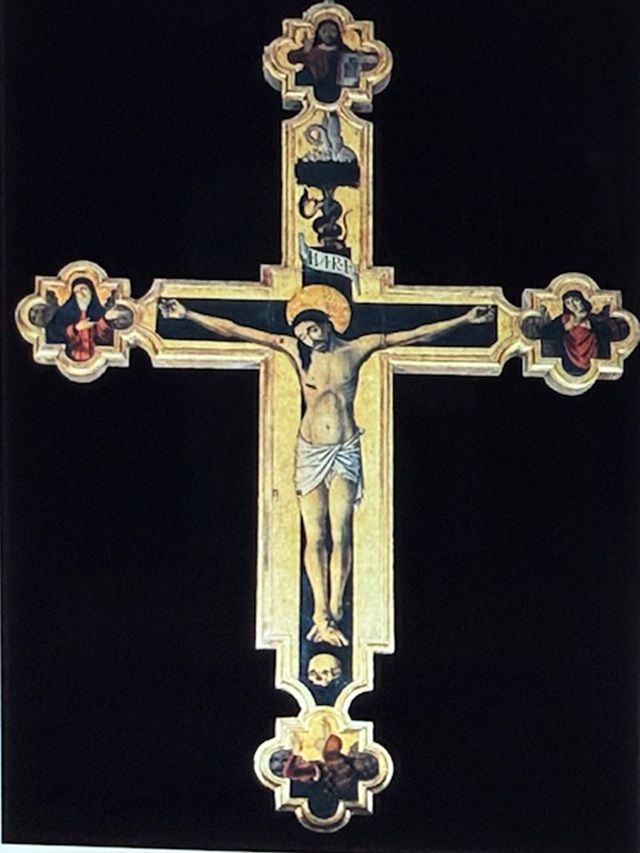
(Master of the Piazza Armerina Cross, Painted Cross, second half of the 15th century, Piazza Armerina, Cathedral,)
Dear Brothers and Sisters of the Order of Saint Lazarus of Jerusalem,
Perhaps even more so than Easter, the liturgical action of Good Friday with the commemoration of the Lord's Passion, which was already the focus of the liturgy of the Word on the preceding, so-called “Palm Sunday”, arouses involvement and emotion on the part of the faithful.
It is the involvement in the Passion of Christ of one's own sufferings and sorrows, of the labours and disappointments of each day, of the experience of death that touches everyone to some extent, that makes one feel the experience of Christ's cross close at hand, while his resurrection remains a fact yet to be experienced in one's own flesh.
In the course of his third missionary journey, Paul announces in Athens, in the context of a well-prepared speech, also in view of the confrontation with the local scholars, the resurrection from the dead of Jesus, but only a few became believers, arousing, indeed, the derision of most (Acts 17:18, 31-32).
The failure of his preaching in Athens causes the Apostle in the next stage, Corinth, to correct his aim, changing the style and content of the proclamation. Later, he would write, retracing his experience in the city of the Isthmus: "When I came among you, I did not come to proclaim to you the testimony of God with sublimity of word or wisdom. For I thought that I knew nothing among you but Jesus Christ, and he crucified. I came among you in weakness and with much fear and trembling; and my word and my message were not based on persuasive discourses of wisdom, but on the manifestation of the Spirit and his power..." (1 Cor 2:1-4). Unlike in Athens where Paul speaks first of all of resurrection from the dead, in Corinth, the proclamation of the ‘word of the cross’ (1Cor 1:18) opens the door of faith to a numerous people (Acts 18:10). Not that he does not announce the resurrection to the Corinthians (1Cor 15), but this is subordinated to the fact that it is first and foremost the Crucified One, who is risen (cf. Mk 16:6).
The resurrection, in fact, if divorced from the passion and the death of the cross, remains in the realm of the miraculous, and therefore in the unavailability of man, maintaining, moreover, the abysmal distance between the Creator, the Almighty, with his wonders and the creature, with his impotence, marked by death.
God, on the other hand, who has always been the “Holy One in the midst” of His people (cf. Hos 11:9), involves Himself in human affairs and commits Himself totally in His Son Jesus - this year, in a jubilee context, we celebrate the 1700th anniversary of the proclamation at Nicaea of the dogma of His being God -, not a subordinate god or a creature, but He Himself God. He does not avail Himself of His divine prerogatives, but rather strips Himself of them (kenosis), in order to live in solidarity with human nature, and to the extreme consequences, that is, death, and death indeed on a cross, as is sung in the hymn quoted by Paul in his letter to the Philippians (2:6-8).
The assumption of the form of the slave, which, in Paul's language, means ‘slave of sin (Rom 6:17; cf. also Jn 8:34), by ’the one who, though he knew no sin, God made him sin for us‘ (2 Cor 5:21), by the one ’who became a curse for us, as it is written: 'Cursed is he who hangs from the wood (Gal 3:13)' - the ignominious death of the cross - , reminds us that there is no space of the lowest human degradation that is not reached by the saving action of the cross of Christ.
Only a God who does not intervene with the “magic wand” of the resurrection, but who makes himself in complete solidarity with man, and by sharing his mortal nature does not leave him in despair, shows respect for the dignity of the human condition, stubbornly persevering in the love with which he created it. The resurrection then will not be seen as a miraculous intervention, but as the Father's consequent response to the Son's act of love. Our God, therefore, is a credible God and therefore capable of eliciting our free response of faith, and our involvement in the mystery of his dying out of love, to rise again together out of love.
+ Dom Vittorio Rizzone, OSB, ECLJ
Abbot of San Martino delle Scale


